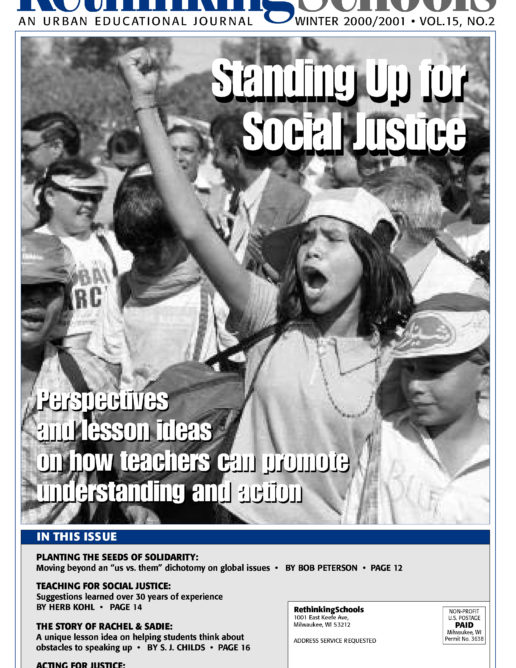Preview of Article:
Subtractive Schooling
What happens when schools disrespect students' cultural heritage and when teacher fail to listen to the students?
In the fall of 1994, the school’s journalism teacher, Mr. Chilcoate, was asked to teach a couple of freshman English classes. These classes differed from others in the department because Mr. Chilcoate deliberately integrated the standard ninth-grade English curriculum with his own journalistic approaches and interests. Despite his efforts to make the course interesting, he was finding it difficult to adjust both to teaching the regular curriculum and his feisty freshmen students. Mr. Chilcoate’s job was made even more difficult by scheduling problems – he met his students for the first time three weeks into the semester.
One morning in late October, when I encountered him in the hall, Mr. Chilcoate was visibly distressed. He blurted out that he had “blown it” with the students in his first-period class. “I lost my cool when they complained about a writing assignment I gave them,” he confessed. The assignment was to write a personal essay. He explained that the students obviously were not yet ready to write about their lives, but that morning he had simply lost his patience with them. He lamented his too-quick decision to discharge one of the more vocal students, a female, from his classroom. This tactic had far larger ramifications than he had either intended or anticipated. The student he sent out of his class was then caught “skipping” by an assistant principal; and the rest of the students, when they found out, were even angrier with him than they had been initially.
Because Mr. Chilcoate and I had developed a respectful, collegial relationship partly as a result of my having spoken about college to students in his classes on other occasions, I felt comfortable asking him if I could help in any way. He responded readily, asking me if I would be willing to talk to his class the following day. I agreed.
After introducing me to his class of approximately twenty students, Mr. Chilcoate left the room. Except for a couple of African-American students, the class was comprised of U.S.-born Mexican youth. When I asked the group to form a circle so that we could talk, one male student refused.
“You don’t need to talk to me,” he said curtly, with an irate expression on his face.

